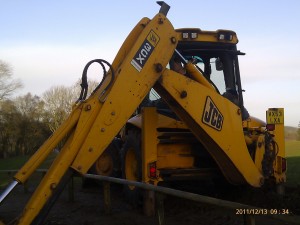
This is Andrew's Digger
What a good day! After a stormy wet night–and that was just the TVGS future events planning meeting–it was lovely to see a bright sunny dry day that Richard the Farmer had chosen for further digger operations at Martley Rock.
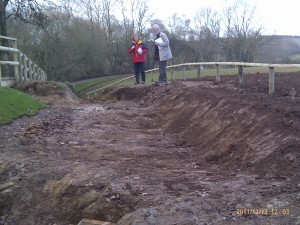
Newly Revealed Malvern complex. Moira and John
Quickly summoning as many professionals as I could (I’m only just getting up, said M. Well it was 9.30am) I dashed to site to see that Andrew the JCB man, had already excavated a large patch of top soil covering the pre-cambrian rock near the rim of the old quarry. Unexpectedly the rock surface
dipped away behind the rim, so we will probably end up with pool number 2 there!
Andrew cleared the west end of the main trench, with some difficulty,
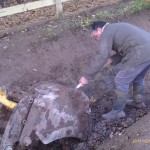
Richard Helping
as the recent rains caused his digger to slip and slide all over the place, then tackled the bit that both Richard (oh yes, a budding little geologist is Richard) and I wanted — the search for the missing triassic.
To explain. Martley Rock site started off with rocks from six systems–pre-cambrian, cambrian, devonian, triassic, carboniferous and quaternary. Closer inspection changed that a bit–the devonian became silurian, so no loss there, but what we thought was triassic was definitely shown to be more silurian (raglan mudstone)–they are only around 200 million years apart! As for quaternary, a much more recent system, well there are bits and pieces, but nothing important such as deposits of river gravels or even tufa rock. So that left only 4 ages of rocks. Not good enough.
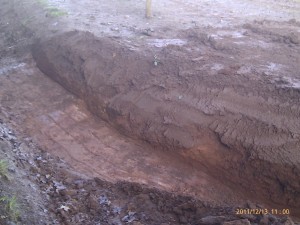
Carboniferous, Silurian, Fault, Triassic
The East Malvern fault we knew, ran through site somewhere, and thanks to Bill Barclay of the British Geological Survey, we had a good idea where, viz to the east of the east end of the long trench. On the east side of the fault lay the fabled triassic–to be seen very clearly at Scar Cottage and the Nubbins as well as in many local buildings–and on the west side–we were not really sure. Richards farming knowledge of soil types and where these change has been invaluable and he thought that the line lay very close to the end of the trench, so we decided to dig from there. Amazing, within a couple of metres the grey blue carboniferous changed to damp, dull red clay of the Raglan thence to the unmistakeable brick red, drier and much more porous Triassic,
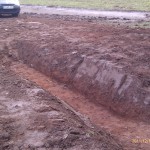
Look at that Colour
known here as Bromsgrove sandstone. Between the two, the East Malvern fault with a jumble of debris from that event. What is so pleasing is that the changeover is contiguous with the rest of the site, so it forms a
continuous story line. Thanks Andrew and Richard and also to Moira and John who came out at short notice to measure and record.
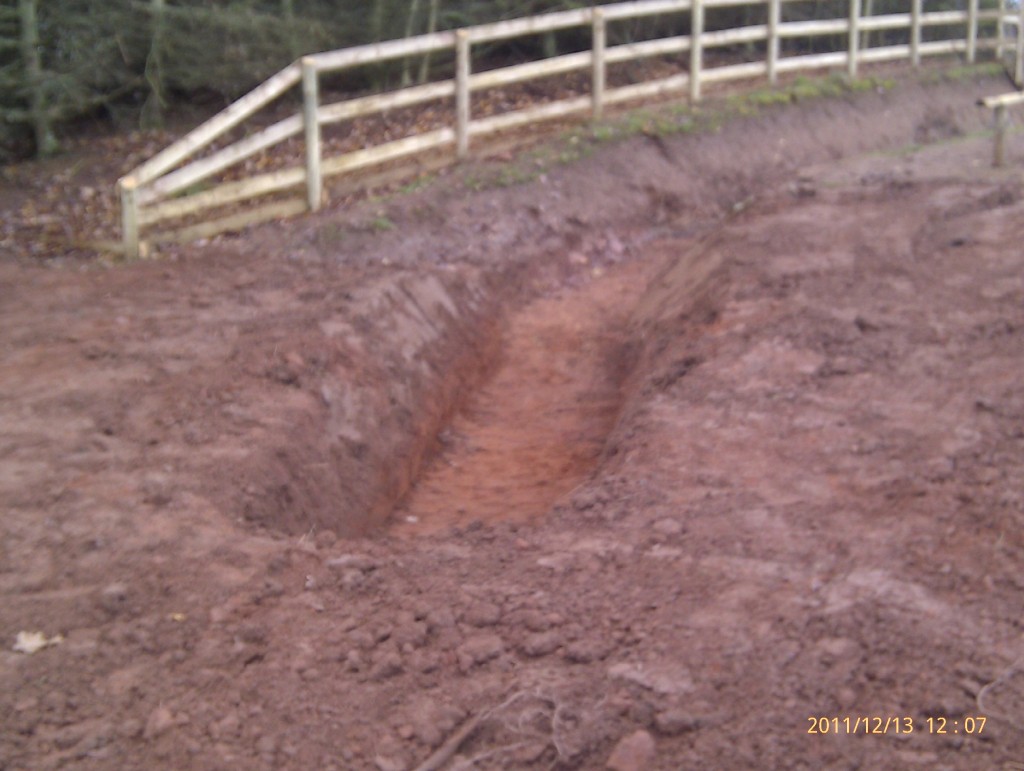
Blurry but RED